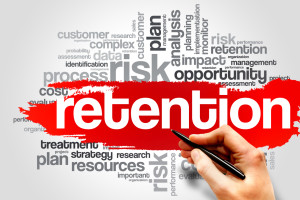Many industries engage in some form of predictive analytics — from meteorology and oncology to Wall Street and sports television — but the mathematical analysis of debt collections operations is a fairly recent addition. Call center managers now harness the power of predictive data to garner better results for their clients and gauge the effectiveness of their strategies and frontline collectors.
“The future of the collections industry,” wrote Mark Luber in insideARM, “lies within a mathematical science that leverages alternative, personal data to determine the probability of debt repayment: predictive analytics. The efficiency of predictive analytics comes through the application of the non-traditional data.”
 According to ScoreData, predictive analytics often describe predictive models, a term used to explain related analytic disciplines that may improve productivity.
According to ScoreData, predictive analytics often describe predictive models, a term used to explain related analytic disciplines that may improve productivity.
Predictive models analyze past performance to forecast the likelihood of future customer behavior, such as potential attrition or churn. This category also encompasses models that “detect” subtle data patterns to answer questions about customer behavior including fraud detection models.
Predictive analysis is widely used in financial services, insurance, telecommunication, retail, healthcare and government. “A major global carrier saved $70 million and decreased net bad debt by 25% in its first year of using an analytics-based collections solution,” stated FICO. “Collectors can pinpoint which accounts will repay the most.”
Traditional Predictive Analytics in Debt Collections
In contrast to the outdated “expert model” of collections where strategies were based on the experience and wisdom of management, traditional predictive analytics generates a predictive behavior score after analyzing the relationship of past and present account data with mathematical algorithms.
This data helps collection agencies understand the behavior of customers, predict their behavior during delinquency or default, and prioritize strategies to maximize recovery and reduce costs.
Predictive Scores
In 2010, FICO released “Boost Collections and Recovery Results with Analytics,” a research paper aggregating the salient content of “several studies that show the value of collections and recovery analytics in practice.”
The publication said debt collectors use behavior scores to predict trends such as the “probability that an account will go into late-stage delinquency, charge-off or bankruptcy over the next six or twelve months.”
Collection-specific scoring, on the other hand, predicts “what will happen in a much shorter time frame — the next month or two — using data elements that are proven to be effective for collections.” This approach can help predict:
- The probability an account will decline into further stages of delinquency during the next 60 days
- The return of a consumer to good standing during the current cycle
- A consumer making a payment in the next 30 days
- The most cost-effective means of contacting a consumer (e.g. email versus phone call)
- The most cost-effective settlement offers and their timing
Segmentation
 Before the era of analyzing predictive data, lenders treated people as “debtors” rather than “customers” once their account declined into the recovery stage, and lenders often used their account balances and credit scores to determine the recovery efforts. With this simplistic approach to segmentation, accounts with the largest balances or highest credit scores received the highest priority while those with the smallest balances or lowest credit scores were given the lowest priority.
Before the era of analyzing predictive data, lenders treated people as “debtors” rather than “customers” once their account declined into the recovery stage, and lenders often used their account balances and credit scores to determine the recovery efforts. With this simplistic approach to segmentation, accounts with the largest balances or highest credit scores received the highest priority while those with the smallest balances or lowest credit scores were given the lowest priority.
It was later discovered that adding collection-specific scoring produced a more accurate prediction of recovery versus the approach of assigning priority to accounts having the highest balances or credit scores.
FICO also found that combining collection-specific scores with a credit bureau risk scores yield better results. “Since collection and credit bureau scoring models each leverage different data sources, using both scores would factor in a wider set of data, which produces more refined account segmentation than either score on its own,” stated FICO in the above study.
Other experts review customer data and conduct segmentation by accounts having similar characteristics. For example, analytics platform developer ScoreData describes segments with straightforward labelling such as first-time defaulters, lazy customers, self-cure customers and point-of-no-return customers (PNRC). Playing along, lazy customers “are just too lazy to pay on time” while the PNRC variety is most likely to turn to bankruptcy and is “not going to pay anything despite any collection efforts.”
Strategic Predictive Analytics
In recent years, best-in-class debt collection agencies began integrating leading software platforms to optimize their processes. Called strategic predictive analytics, this approach harnesses the data processing of traditional analytics with regimen such as conducting cost-benefit analysis, running real-time strategy simulations within the platforms, and prioritizing collection activities using collection-specific scoring and risk scores.
If the simulation models are successful, then the strategies are quickly rolled out to the appropriate account segments. Some software programs are capable of coding of individual accounts to insure that the correct strategy is being  applied downstream. The result is a customized treatment of each consumer.
applied downstream. The result is a customized treatment of each consumer.
After implementation, operations directors run multiple reports and score cards to evaluate the performance of the revised strategy, individual collectors and during a plethora of collection periods: daily, weekly, monthly, quarterly, yearly, year-to-year, etc. They even review the performance of their agency against the competition for clients employing multiple collection agencies.
With the help of strategic predictive analytics, cutting-edge technology and a highly experienced management team, Optio Solutions provides exceptional return on investment for its clients with the added benefit of brand protection. Contact us today to learn about an individualized program for your organization.






